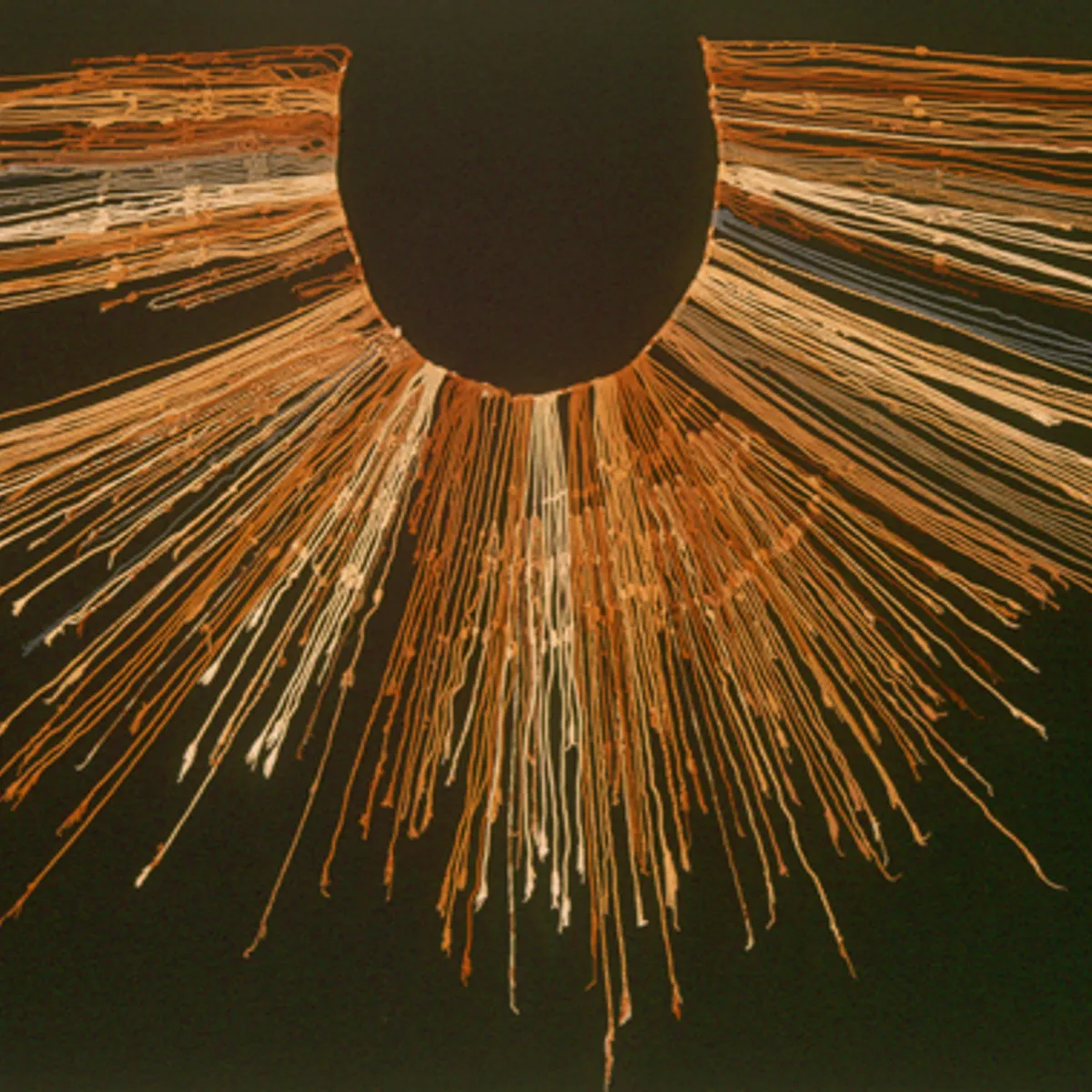Khipu
A system of knotted cords used by the people in the Andes to record and store information.

Archaeological findings suggest that the structures of knotted cords referred to as Khipus (also Quipu or Kipu) were first developed in the Wari Empire (600-1100 CE) in today's Peru. They became widely important during the Inca culture's imperial phase from 1400-1532 when hundreds of thousands of khipus were in use. Their structure largely follows a common pattern, starting from a pencil-thick primary cord with groups of pendant cords attached to it. Often these pendant cords carry ancillary strings or subsidiaries, with many khipus consisting of thousands of cords in total.
Khipucamayocs, a trained caste of khipu readers, used the cords to store extensive numerical information in the structure of a base 10 decimal system, encoding tax obligations, census records, calendrical and military information. It is presumed that khipus also held stories, songs, and other non-numerical information, but historians have not been able to decipher the linguistic logic of these types of recordings. Since the 90s research has shifted attention to other material qualities aside from knot positions, such as color or directional variations of cord spin, ply, and methods of attachment but there has been little advancement in decoding other values aside from numbers. Recent research from the Harvard Khipu Database suggests however that the Incas employed khipus in a system of checks and balances where several khipucamayocs were tasked to record the same information for the community.
Western involvement in the history of khipus can be described as a textbook example of colonialism, that only started with their ban as devil's work in 1953 during the Spanish Inquisition, as well as many failed deciphering attempts following Western knowledge traditions. In any case the remarkable objects that still hold many secrets about Andean life are likely to fascinate researchers and historians for years to come.
Images:
- Inca Khipu, from the Larco Museum in Lima , https://en.wikipedia.org/wiki/Quipu#/media/File:Inca_Quipu.jpg
- Pendant khipu, Yale Peabody Museum of Natural History: Photo by Moore, B.P., 2010, https://www.doaks.org/resources/online-exhibits/written-in-knots/inka
- https://www.doaks.org/resources/online-exhibits/written-in-knots/inka/khipu-with-summary-cords
Similar projects to Khipu
Back to all projects.